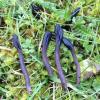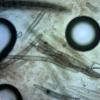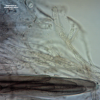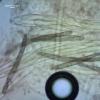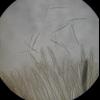
07-01-2026 22:22
 Danny Newman
Danny Newman
Tatraea sp. on indet. hardwood The Swag, Great Sm

10-01-2026 01:18
 Danny Newman
Danny Newman
cf. Neovaginatispora fuckelii on indet. shrub Pre

07-01-2026 10:24
 Danny Newman
Danny Newman
Pezicula sp. on indet. hardwood Appalachian Highl

09-01-2026 17:41
Arnold BüschlenHallo, F. dilatata wird von vielen Bryoparasiten

09-01-2026 10:08
 Blasco Rafael
Blasco Rafael
Hola, en el mismo habitat que la anteriorRetamaDia

08-01-2026 21:22
 Blasco Rafael
Blasco Rafael
Hola, He recogido esta muestra de Orbilia sobre Re

07-01-2026 17:29
 Marc Detollenaere
Marc Detollenaere
Dear Forum,On a barkless Populus I found some smal

10-11-2021 17:33
 Riet van Oosten
Riet van Oosten
Add-on topic http://www.ascofrance.com/forum/7059

07-01-2026 10:05
 Danny Newman
Danny Newman
cf. Chaetospermum on XylariaCosby Campground, Grea
Geoglossum sp. x2
Andy Overall,
24-12-2014 15:34
Hans-Otto Baral,
24-12-2014 17:35

Re : Geoglossum sp. x2
Hi Andy
I think this need images of more and well-developed spores. I do not know what these spores with constrictions are. They look more like conidia.
Important is to look at living asci. is your material still fresh? Take photos of asci with spores inside, and do not apply any pressure. Then you hjave the chance to see many turgescent asci. It is possible that your first specimen concerns G. fallax. if so the spores must be hyaline inside the living asci and turn brown only a reasonalbe time after ejection (or within dead asci). Most other Geoglossums eject brown spores.
Zotto
I think this need images of more and well-developed spores. I do not know what these spores with constrictions are. They look more like conidia.
Important is to look at living asci. is your material still fresh? Take photos of asci with spores inside, and do not apply any pressure. Then you hjave the chance to see many turgescent asci. It is possible that your first specimen concerns G. fallax. if so the spores must be hyaline inside the living asci and turn brown only a reasonalbe time after ejection (or within dead asci). Most other Geoglossums eject brown spores.
Zotto
Andy Overall,
24-12-2014 18:05
Re : Geoglossum sp. x2
Thanks Otto,
The material is fairly fresh, I have been keeping them in the fridge, would this effect the structures adversely in any way? The first specimen shows dark spores in the ascus, 1st image below, the second, for the second species, shows hyaline spores in the ascus. Would you have any idea as to what the spear-headed looking spores in the ascus of the second image may be? Andy
The material is fairly fresh, I have been keeping them in the fridge, would this effect the structures adversely in any way? The first specimen shows dark spores in the ascus, 1st image below, the second, for the second species, shows hyaline spores in the ascus. Would you have any idea as to what the spear-headed looking spores in the ascus of the second image may be? Andy
Hans-Otto Baral,
25-12-2014 09:25

Re : Geoglossum sp. x2
The left images shows a dead ascus. So this says little.
The tow asci right look alive, so they might eject hyaline spores. I never saw such swollen spore apex in Geoglossaceae. Maybe this is caused by the fridge?
here living asci that eject living spores (G. cf. hakelieri, phot. B. Fellmann).
Zotto
The tow asci right look alive, so they might eject hyaline spores. I never saw such swollen spore apex in Geoglossaceae. Maybe this is caused by the fridge?
here living asci that eject living spores (G. cf. hakelieri, phot. B. Fellmann).
Zotto
Andy Overall,
25-12-2014 11:01
Re : Geoglossum sp. x2
Thanks Otto, thats most useful. Happy Christmas from London :-)

